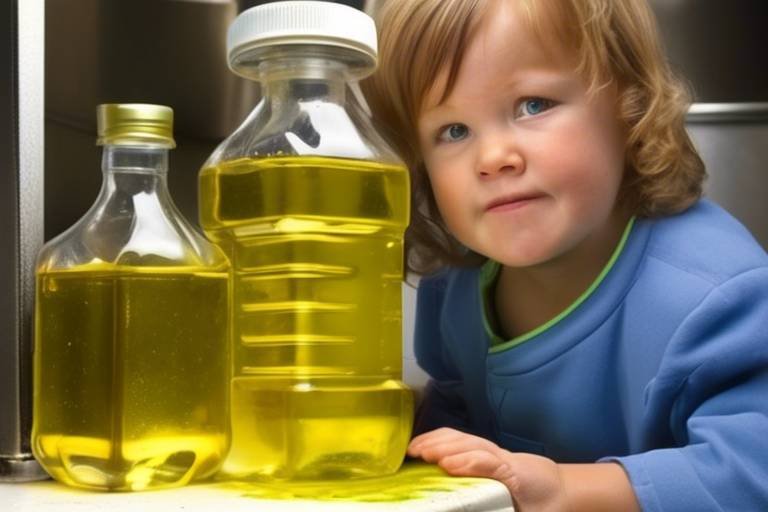Tips for Cleaning Up After a Big Neighbourhood Event
Cleaning up after a big neighborhood event can feel like a daunting task, but with the right strategies in place, it can actually be a fun and rewarding experience! Imagine the satisfaction of seeing your community space transformed back into its pristine state, all thanks to the collective efforts of your neighbors. This article provides practical advice and strategies for effectively cleaning up after a large community gathering, ensuring a tidy environment and fostering good relationships among neighbors.
Recruiting volunteers for a cleanup crew can streamline the process significantly. Think of it like assembling a superhero team—each person brings their own unique skills and strengths to the table. Effective organization ensures that tasks are delegated efficiently, making the cleanup quicker and more enjoyable for everyone involved. You might want to create a simple chart to assign roles, such as:
| Role | Responsibilities |
|---|---|
| Trash Collectors | Gather and dispose of all trash. |
| Recyclers | Sort recyclables from waste. |
| Team Leaders | Oversee specific areas and coordinate efforts. |
By organizing your cleanup crew this way, you not only make the process smoother but also ensure that everyone feels included and valued.
Before the event, gather essential cleaning supplies such as trash bags, brooms, and recycling bins. Think of these supplies as your cleanup toolkit—without them, you’re left unprepared. Having all necessary materials on hand will facilitate a smooth and efficient cleanup process. You might want to consider including:
- Trash bags (both regular and biodegradable)
- Recycling bins
- Gloves for volunteers
- Brooms and dustpans
- Water bottles to keep everyone hydrated
When everyone is equipped with the right tools, it not only speeds up the process but also makes it more enjoyable.
Understanding local recycling guidelines is crucial. It’s like knowing the rules of a game; without them, you might end up making mistakes that could have been easily avoided. Properly sorting waste helps minimize landfill contributions and promotes environmental responsibility within the community during and after the event. Make sure to educate your volunteers on what can and cannot be recycled.
Familiarize yourself with what can be recycled, such as paper, plastics, and metals. This knowledge aids in effective waste sorting and encourages community members to participate actively. For example, you could set up designated bins for:
- Paper products (like napkins and flyers)
- Plastic bottles and containers
- Aluminum cans
Some items require special disposal methods, such as batteries and chemicals. Knowing how to handle these materials safely protects both the environment and community members. Always check local regulations for hazardous waste disposal to avoid any mishaps.
Encouraging community involvement not only fosters a sense of ownership but also strengthens relationships. Engaging neighbors in the cleanup process can lead to a more cohesive community spirit. When everyone pitches in, it feels less like a chore and more like a community bonding experience. You might even discover new friendships along the way!
Creating a clear timeline for cleanup activities helps keep everyone on track. Establishing deadlines ensures that tasks are completed efficiently and that the area is restored promptly. You could break down the cleanup into phases, such as:
- Initial trash collection
- Sorting recyclables
- Final touches (like sweeping and picking up stray items)
Consider hosting a small gathering after the cleanup to celebrate everyone’s hard work. This can serve as a thank-you and encourage future participation in community events. A simple barbecue or potluck can go a long way in showing appreciation and reinforcing community bonds.
After the event, gather feedback from participants to identify areas for improvement. Learning from each experience can enhance future neighborhood events and cleanup efforts. You might want to create a simple survey or have an informal chat with volunteers to discuss what worked well and what could be improved.
Q: How can I encourage more people to volunteer for the cleanup?
A: Use social media to spread the word, and consider offering incentives like snacks or a small prize for the most enthusiastic volunteer!
Q: What should I do if someone refuses to follow recycling guidelines?
A: Politely remind them of the importance of recycling and offer to help them sort their items correctly.
Q: How can we make the cleanup more fun?
A: Play some music, create friendly competitions for who can collect the most trash, or have a themed cleanup day!
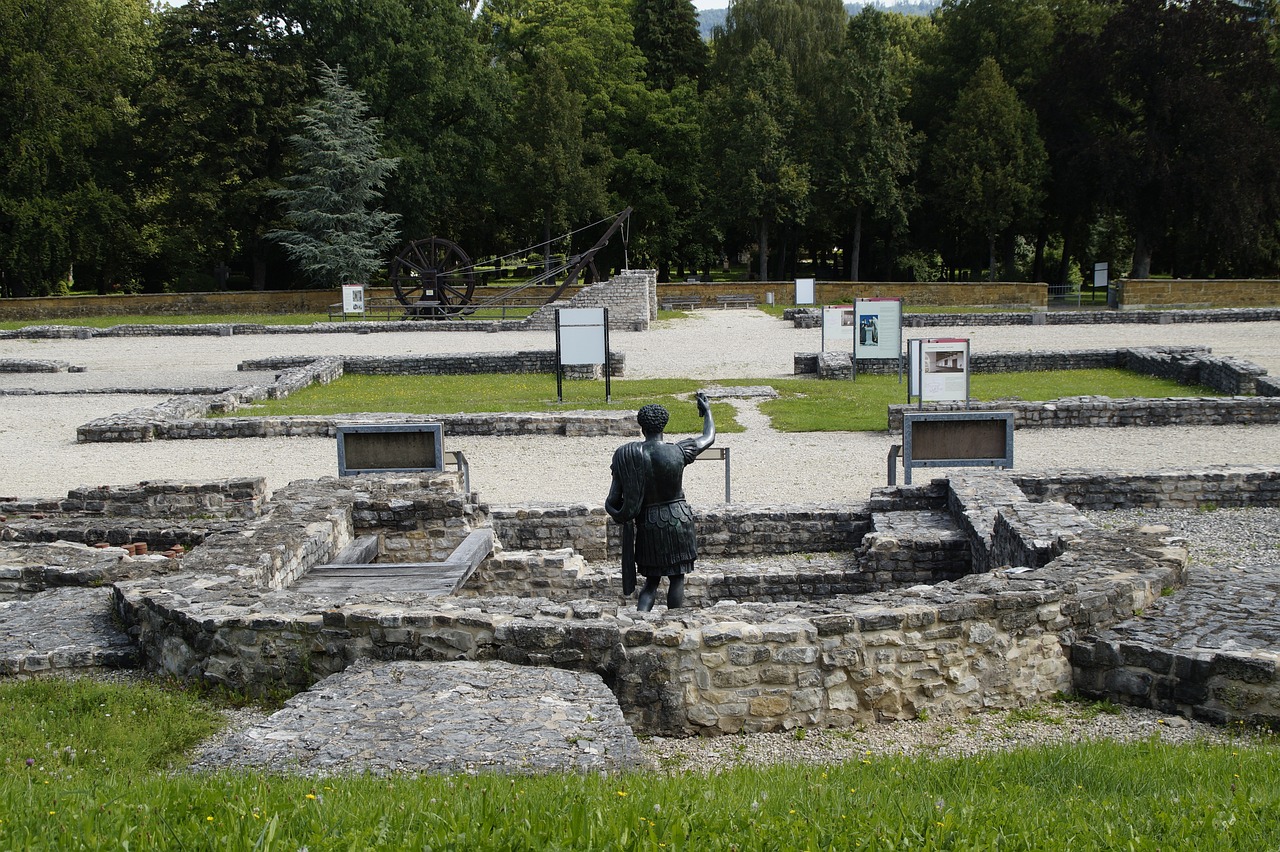
Organizing a Cleanup Crew
Cleaning up after a big neighborhood event can feel like a daunting task, but it doesn't have to be! By , you can transform a chaotic mess into a smoothly executed operation. Think of it like assembling a team for a big project; everyone has their strengths, and together, you can achieve more than you could alone. Start by reaching out to your neighbors ahead of time. A simple message in a community group chat or a flyer can work wonders. You might be surprised by how many people are willing to lend a hand!
Once you have a group of volunteers, it's essential to delegate tasks effectively. You can assign roles based on individual strengths or preferences. For instance, some might prefer picking up litter while others might enjoy sorting recyclables or managing supplies. To keep things organized, consider creating a simple
| Volunteer Name | Assigned Task | Contact Information |
|---|---|---|
| Jane Doe | Litter Collection | jane@example.com |
| John Smith | Recycling Sorting | john@example.com |
| Emily Johnson | Supply Management | emily@example.com |
Creating a sense of teamwork is crucial. You can foster this by encouraging communication among your crew. Setting up a group chat or a social media group can help everyone stay informed and motivated. Additionally, consider incorporating some fun elements into the cleanup. Maybe you could turn it into a friendly competition—whoever collects the most trash wins a small prize! This not only makes the cleanup process quicker but also adds an element of excitement.
Don't forget to plan for breaks! Cleaning up can be tiring, and a quick break for refreshments can rejuvenate your team. Providing snacks and drinks can go a long way in keeping spirits high. Plus, it gives everyone a chance to socialize and enjoy the camaraderie that comes with working together towards a common goal.
In summary, organizing a cleanup crew involves not just gathering volunteers but also ensuring that everyone feels valued and engaged. By delegating tasks, maintaining open lines of communication, and injecting a bit of fun into the process, you can turn a potentially overwhelming cleanup into an enjoyable and rewarding experience for everyone involved.
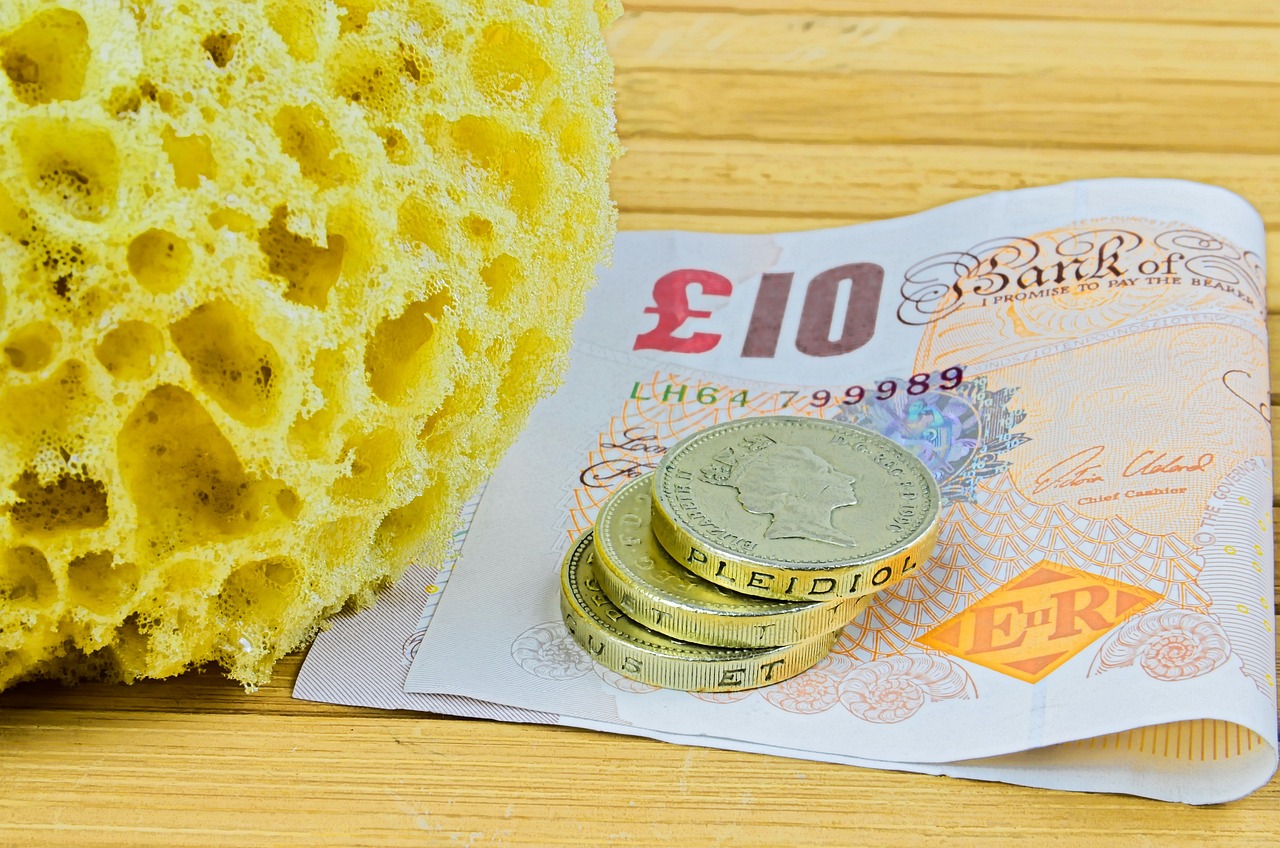
Gathering Necessary Supplies
Before diving into the cleanup frenzy after a big neighborhood event, it’s essential to gather the right supplies. Think of your cleanup as a mission; just like any good soldier, you need your gear ready! Having everything prepared not only makes the job easier but also ensures that no one gets sidetracked looking for materials when they could be picking up trash and enjoying the camaraderie of their neighbors.
Start by making a checklist of the essentials you’ll need. Here’s a quick rundown of items that should be on your radar:
- Trash Bags: You can never have too many. Opt for heavy-duty bags to handle all types of waste.
- Recycling Bins: Clearly labeled bins for paper, plastics, and metals will help everyone sort their trash effectively.
- Brooms and Dustpans: Perfect for sweeping up debris and keeping the area looking pristine.
- Gloves: Protect your hands while handling waste. Consider providing disposable gloves for volunteers.
- First Aid Kit: Always a smart idea to have on hand, just in case someone gets a little too enthusiastic while cleaning.
Additionally, don’t forget about refreshments for your volunteers! A little hydration and snacks can go a long way in keeping spirits high. After all, cleaning up doesn’t have to feel like a chore; it can be a fun community bonding experience! Consider setting up a small station with water bottles and light snacks to keep everyone fueled and ready to tackle the cleanup.
Lastly, it’s a good idea to designate a central supply area where all these materials can be stored during the event. This way, volunteers can easily access what they need without wandering around aimlessly, losing precious cleanup time. A simple table with all the supplies laid out can make a world of difference and keep things organized.
In summary, gathering necessary supplies is about more than just having the right tools; it’s about creating an environment where everyone feels prepared and motivated to contribute. So, gear up, and let’s make that neighborhood shine!
Q: What should I do if we run out of trash bags during the cleanup?
A: Always plan for the unexpected! Having a few extra bags on standby or knowing where to quickly obtain more can save the day. Consider asking local businesses if they can donate some or check if your community has a supply stash.
Q: How can I encourage my neighbors to participate in the cleanup?
A: Communication is key! Use social media, flyers, or word of mouth to spread the word. Highlight the fun aspects of the cleanup, such as food, music, and the chance to meet neighbors. You might even consider offering a small prize for the most enthusiastic volunteer!

Recycling and Waste Management
When it comes to cleaning up after a big neighborhood event, play a pivotal role. It's not just about picking up trash; it's about being responsible stewards of our environment. Understanding local recycling guidelines can make a significant difference in how effectively we manage waste. So, what exactly should you be aware of? First off, familiarize yourself with the materials that can be recycled. Many people are surprised to learn that items like cardboard, certain plastics, and metals can often be reused, which significantly reduces what ends up in landfills.
Moreover, it's essential to have designated bins for recyclables and trash. Imagine a well-organized setup where each type of waste has its own home. This not only makes it easier for everyone to participate but also encourages a culture of recycling within the community. You might even consider creating a simple visual guide that shows what goes where. This guide can be posted near the bins during the event, making it clear for everyone. Here’s a quick overview of common recyclables:
| Type of Recyclable | Examples |
|---|---|
| Paper | Cardboard, newspapers, office paper |
| Plastics | Bottles, containers (check for recycling symbols) |
| Metals | Cans (aluminum and steel) |
In addition to understanding what can be recycled, it’s crucial to know how to handle hazardous materials. Items such as batteries, electronics, and certain chemicals require special disposal methods to avoid harming the environment. Many communities have designated drop-off locations for these materials, which is a great resource to utilize. By educating yourself and your neighbors about these guidelines, you can ensure that everyone is on the same page and that waste is managed responsibly.
Lastly, promoting a culture of recycling during and after the event can be incredibly rewarding. Encourage everyone to take part in sorting waste as it comes in, and remind them of the positive impact their efforts can have. It’s about creating a community that cares, not just about the event itself, but about the environment we all share. After all, a clean neighborhood is a happy neighborhood!
- What materials can I recycle? Most communities accept paper, plastics, and metals. Always check local guidelines for specifics.
- How do I dispose of hazardous materials? Look for designated drop-off points in your area for safe disposal.
- Can we encourage kids to participate in recycling? Absolutely! Engaging children in the process can instill lifelong habits of environmental responsibility.
- What if I don't have enough recycling bins? Consider asking neighbors to lend their bins or designate one area for recyclables during the event.

Types of Recyclables
This article provides practical advice and strategies for effectively cleaning up after a large community gathering, ensuring a tidy environment and fostering good relationships among neighbors.
Recruiting volunteers for a cleanup crew can streamline the process. Effective organization ensures that tasks are delegated efficiently, making the cleanup quicker and more enjoyable for everyone involved.
Before the event, gather essential cleaning supplies such as trash bags, brooms, and recycling bins. Having all necessary materials on hand will facilitate a smooth and efficient cleanup process.
Understanding local recycling guidelines is crucial. Properly sorting waste helps minimize landfill contributions and promotes environmental responsibility within the community during and after the event.
When it comes to recycling, knowing what can and cannot be recycled is key to making a positive impact. The types of recyclables generally fall into several categories that you should familiarize yourself with. This knowledge not only aids in effective waste sorting but also encourages community members to participate actively in the recycling process.
Here’s a quick overview of the common types of recyclables:
- Paper: This includes newspapers, magazines, and cardboard. Always ensure that they are clean and dry before placing them in the recycling bin.
- Plastics: Look for containers marked with recycling symbols #1 (PETE) and #2 (HDPE). These are commonly accepted in most recycling programs.
- Metals: Aluminum cans, such as soda cans, and tin cans can be recycled. Rinse them out to avoid contamination.
By understanding these categories, you can help your neighbors make informed decisions about what to recycle. It’s like being a recycling superhero—every little effort counts! Remember, the more we recycle, the less waste ends up in landfills, contributing to a healthier planet.
Moreover, some localities may have specific rules regarding certain items, so it’s wise to check with your local waste management authority for any additional guidelines. By doing so, you ensure that your efforts align with community standards and make a significant difference in waste reduction.
Some items require special disposal methods, such as batteries and chemicals. Knowing how to handle these materials safely protects both the environment and community members.
Encouraging community involvement not only fosters a sense of ownership but also strengthens relationships. Engaging neighbors in the cleanup process can lead to a more cohesive community spirit.
Creating a clear timeline for cleanup activities helps keep everyone on track. Establishing deadlines ensures that tasks are completed efficiently and that the area is restored promptly.
Consider hosting a small gathering after the cleanup to celebrate everyone’s hard work. This can serve as a thank-you and encourage future participation in community events.
After the event, gather feedback from participants to identify areas for improvement. Learning from each experience can enhance future neighborhood events and cleanup efforts.
Q: What items can I recycle?
A: Common recyclables include paper, plastics (marked #1 and #2), and metals like aluminum and tin cans. Always check local guidelines for specifics.
Q: How can I ensure my recycling is effective?
A: Clean and dry your recyclables before placing them in the bin, and ensure you are aware of what is accepted in your local recycling program.
Q: What should I do with hazardous materials?
A: Hazardous materials like batteries and chemicals should be disposed of at designated collection points. Contact your local waste management for specific instructions.
Q: How can I get my neighbors involved in cleanup efforts?
A: Organize a fun event, promote it through community boards or social media, and emphasize the benefits of a clean environment to encourage participation.

Disposal of Hazardous Materials
When it comes to cleaning up after a neighborhood event, one of the most critical aspects is the . These items, which can include batteries, paint, chemicals, and certain electronics, require special handling to ensure they don’t pose a risk to the environment or the health of your community members. Ignoring proper disposal methods can lead to serious consequences, including environmental contamination and potential fines. So, how do you navigate this tricky territory?
First and foremost, it’s essential to identify what constitutes a hazardous material. Not everything that seems "off" is hazardous, but here are some common examples:
- Batteries: These can leak harmful chemicals if disposed of improperly.
- Pesticides and Herbicides: These substances can be toxic to wildlife and humans alike.
- Paints and Solvents: Many paints contain volatile organic compounds (VOCs) that can be harmful when released into the environment.
- Electronics: Items like old phones and computers often contain heavy metals.
Once you’ve identified hazardous materials, the next step is to know how to dispose of them correctly. Many communities offer special collection events for hazardous waste, which can be a great opportunity to get rid of these items safely. You can also check with your local waste management authority for guidance on disposal methods. Some facilities have specific drop-off locations where you can bring hazardous materials, ensuring they are handled according to environmental regulations.
Additionally, educating your neighbors about hazardous waste is vital. You might consider creating a small informational flyer or even a brief presentation during the cleanup event to highlight proper disposal methods. This not only promotes safety but also fosters a sense of community responsibility. Remember, the goal is to work together to keep your neighborhood clean and safe.
In summary, being aware of hazardous materials and knowing how to dispose of them correctly is essential for any community cleanup. By taking the time to educate yourself and your neighbors, you contribute to a healthier environment and a stronger community. So, the next time you find yourself with leftover batteries or paint, you’ll know exactly what to do!
Q: What should I do with leftover paint?
A: Leftover paint can often be taken to local hazardous waste collection sites. Some communities also have paint recycling programs.
Q: How can I safely dispose of batteries?
A: Many stores, such as electronics retailers, offer battery recycling programs. You can also check with your local waste management for designated drop-off locations.
Q: Are there any penalties for improper disposal of hazardous materials?
A: Yes, improper disposal can lead to fines and legal consequences, in addition to harming the environment.
Q: Can I mix hazardous materials with regular trash?
A: No, hazardous materials should never be mixed with regular trash. Always follow local guidelines for safe disposal.

Involving the Community
When it comes to cleaning up after a big neighborhood event, involving the community can be a game-changer. Imagine this: a large gathering where laughter and joy fill the air, but once the festivities wind down, the aftermath can feel overwhelming. By engaging your neighbors in the cleanup process, you not only lighten the load but also foster a sense of ownership and camaraderie among everyone involved. Think of it as a team sport; when everyone pitches in, the task becomes less of a chore and more of a community bonding experience.
One effective way to involve the community is to promote the cleanup before the event. Use social media, community boards, and even word of mouth to rally support. Create excitement by emphasizing the importance of a clean environment and how each person’s contribution makes a difference. You could even turn it into a friendly competition, where groups or families compete to see who can collect the most trash. This not only motivates participation but also creates a fun atmosphere. Remember, people are more likely to join in when they feel like they are part of something bigger.
During the cleanup, consider organizing teams based on neighborhoods or sections of the event area. This approach not only makes the process more manageable but also encourages neighbors to work together, fostering relationships. It’s like having a potluck dinner; everyone brings something to the table, and together, you create a feast of cleanliness. To keep spirits high, provide some refreshments and snacks to fuel the effort. A little hydration and nourishment can go a long way in keeping everyone motivated!
Additionally, it’s important to communicate roles clearly. Assign specific tasks to each team, whether it’s picking up litter, sorting recyclables, or setting up disposal stations. This organization helps ensure that everyone knows what to do, making the cleanup more efficient. You could even create a simple chart or table to outline responsibilities:
| Team | Task | Contact Person |
|---|---|---|
| Team A | Picking up litter | John Doe |
| Team B | Sorting recyclables | Jane Smith |
| Team C | Setting up disposal stations | Emily Johnson |
After the cleanup, don’t forget to celebrate the collective effort! A small gathering to thank everyone for their hard work can go a long way in building community spirit. Consider sharing photos from the event, highlighting individual contributions, and perhaps even recognizing “cleanup champions.” This not only reinforces the value of teamwork but also encourages future participation in community events.
Involving the community in cleanup efforts is more than just a practical solution; it’s a way to strengthen bonds and create lasting memories. When everyone comes together for a common cause, the results can be transformative—not just for the environment, but for the community as a whole. So, the next time you plan a neighborhood event, remember to invite your neighbors to join in the cleanup, turning a daunting task into a delightful community affair!
- How can I encourage my neighbors to participate in the cleanup? Use social media, flyers, and word of mouth to spread the word and emphasize the importance of community involvement.
- What supplies should I provide for the cleanup? Essential supplies include trash bags, recycling bins, gloves, and refreshments to keep volunteers energized.
- Is it necessary to sort recyclables during the cleanup? Yes, sorting recyclables helps reduce waste and promotes environmental responsibility within the community.
- How can I make the cleanup fun? Organize teams, create friendly competitions, and offer snacks and drinks to keep spirits high!
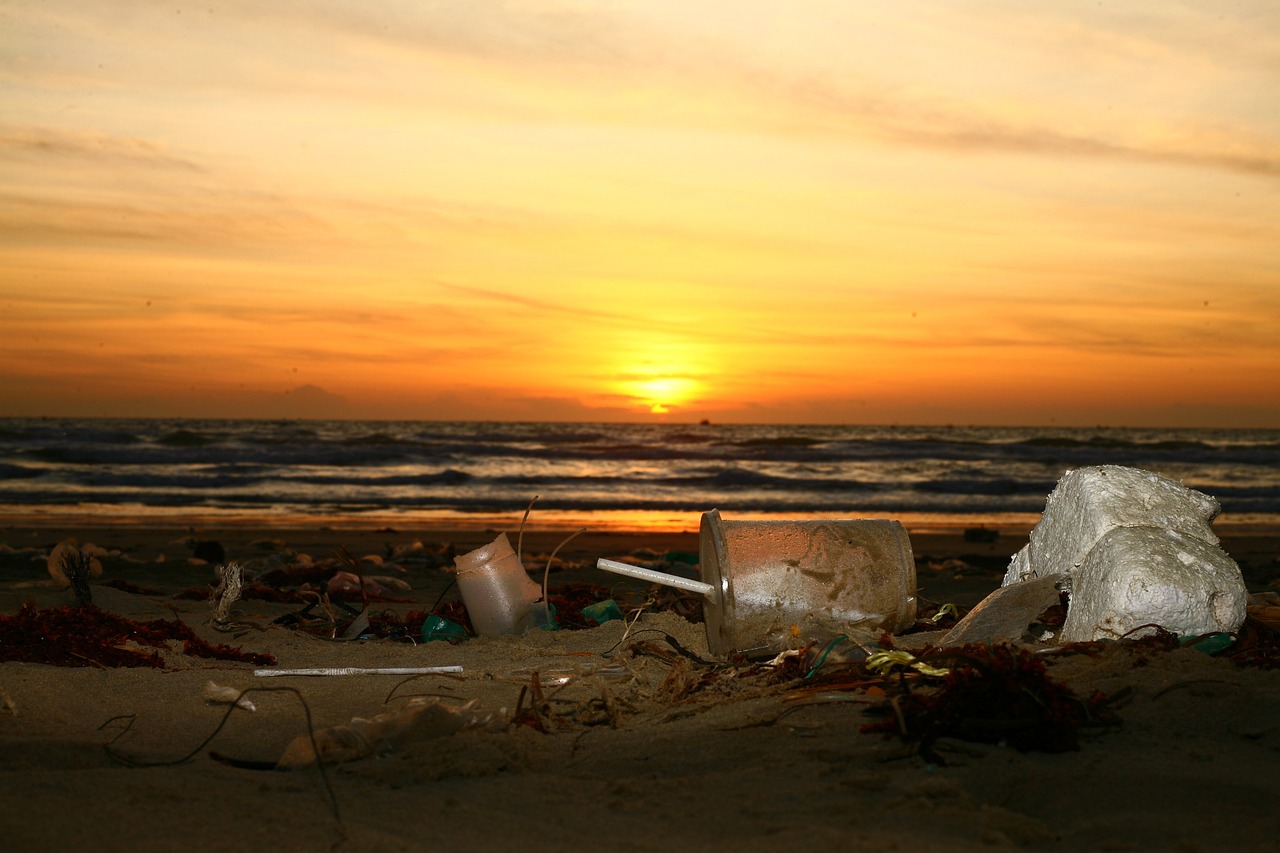
Setting a Timeline
Creating a clear and structured timeline for cleanup activities is essential for ensuring that everything runs smoothly after a big neighborhood event. Think of it as laying the groundwork for a well-orchestrated symphony; without a conductor, the musicians might play out of sync. Similarly, without a timeline, your cleanup crew might find themselves wandering aimlessly, unsure of what to tackle next. So, how do you set this all-important timeline? Let’s dive in!
First, start by determining the overall duration of the cleanup. Depending on the size of the event, this could range from a couple of hours to an entire day. Once you have a rough estimate, break down the cleanup process into manageable chunks. For example, you might want to allocate time for gathering supplies, sorting recyclables, and disposing of waste. Each of these tasks should have its own time slot, ensuring that everyone knows what they should be doing and when.
Next, communicate this timeline to your cleanup crew. You can create a simple table to outline the tasks and their corresponding time slots, making it easy for everyone to follow along. Here’s a quick example:
| Task | Time Slot |
|---|---|
| Gathering Supplies | 9:00 AM - 9:30 AM |
| Sorting Waste | 9:30 AM - 10:30 AM |
| Disposing of Waste | 10:30 AM - 11:00 AM |
| Final Walkthrough | 11:00 AM - 11:30 AM |
Having a visual representation of the timeline not only keeps everyone on track but also adds an element of accountability. When people know that there’s a timeline in place, they’re more likely to stay focused and motivated. Additionally, remember to build in some buffer time. Unexpected delays can happen, and it’s always better to have a little extra time than to rush through tasks at the last minute.
Finally, don’t forget to celebrate the completion of each task! A simple cheer or a high-five can boost morale and keep spirits high throughout the cleanup process. After all, a little positivity goes a long way in fostering a sense of community. By setting a clear timeline and encouraging teamwork, you’ll not only make the cleanup more efficient but also create lasting memories with your neighbors.
- How long should the cleanup take? The duration can vary based on the size of the event, but typically, a few hours should suffice.
- What if some volunteers can't stay for the entire cleanup? That's okay! Make sure to assign tasks that can be completed within shorter time frames for those who need to leave early.
- How do I keep everyone motivated during the cleanup? Consider playing music, offering refreshments, and recognizing everyone’s contributions to keep the energy up.
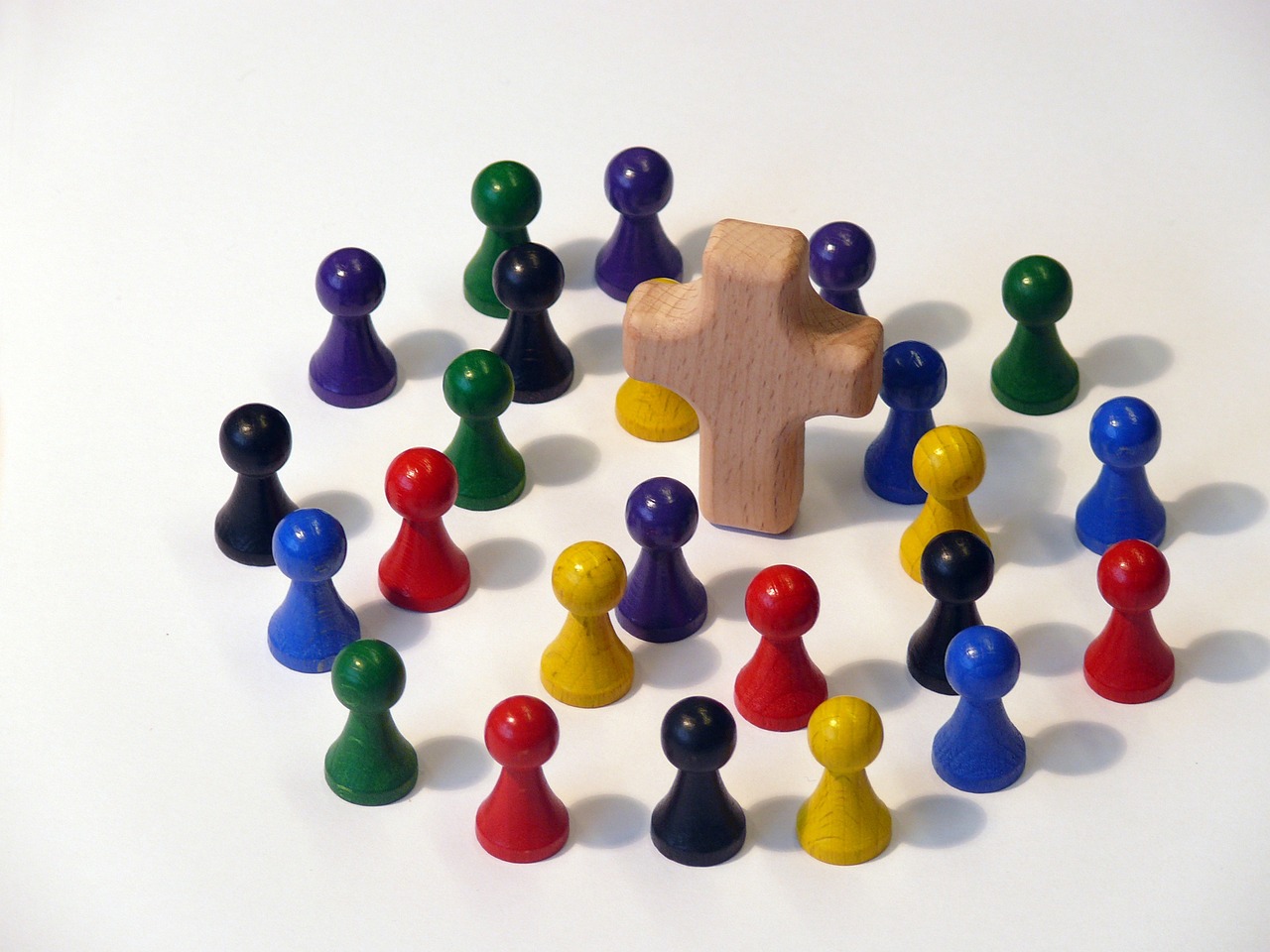
Post-Cleanup Celebration
After the hard work of cleaning up your neighborhood event, it’s essential to take a moment to celebrate the collective effort. A not only serves as a thank-you to all the volunteers but also helps to strengthen the bonds within the community. Imagine the satisfaction of seeing a clean park or street, knowing that everyone played a part in it! This celebration can be as simple or elaborate as you wish, but the key is to make it enjoyable and inclusive.
Consider hosting a small gathering right after the cleanup. It doesn’t have to be a grand affair; even a casual picnic or a coffee gathering can do wonders. Here are some fun ideas to spark joy:
- Food and Beverages: Provide light snacks and refreshments. A few homemade cookies or a big pot of coffee can go a long way in creating a warm atmosphere.
- Games and Activities: Organize some fun games for both kids and adults. Simple activities like a sack race or a tug-of-war can bring laughter and camaraderie.
- Recognition: Take a moment to recognize the hard work of volunteers. You could even create a certificate of appreciation for those who went above and beyond.
By fostering a celebratory vibe, you not only acknowledge the effort put into cleaning but also encourage participation in future events. The joy of working together can transform into lasting friendships and a stronger community spirit. So, don’t skip this step! Celebrate the small victories, and let the good times roll!
Here are some common questions that might arise after organizing a neighborhood cleanup:
- What should we do if it rains on the cleanup day? It's wise to have a backup plan! Consider rescheduling or moving to a covered location.
- How can we ensure that everyone participates? Promote the event through social media, flyers, and word of mouth. The more people feel involved, the more likely they are to show up!
- What if someone brings hazardous waste? Have a designated area for hazardous materials and inform volunteers on how to handle them safely.
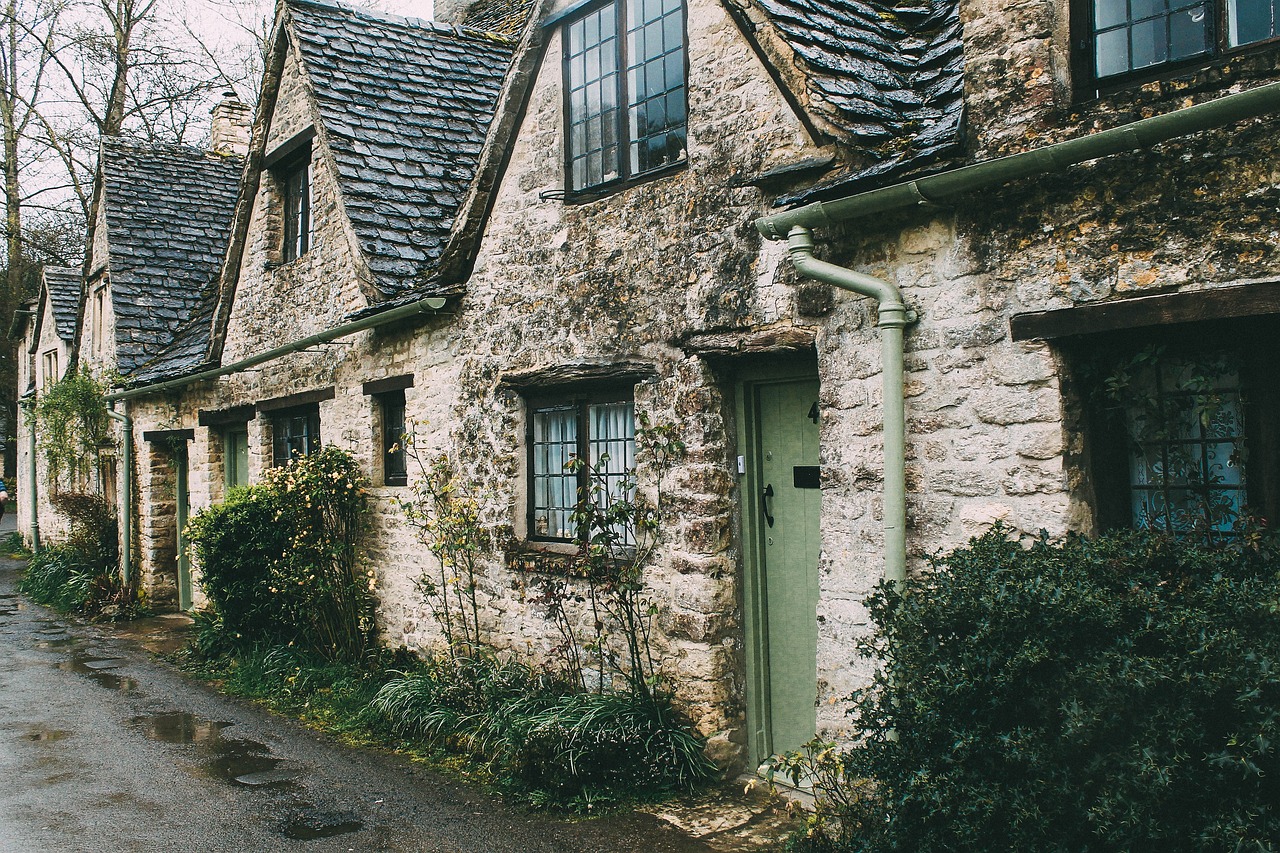
Feedback and Improvement
After the dust settles and the last trash bag is tied up, it’s time to reflect on the cleanup process. Gathering feedback from participants is not just a good idea; it’s an essential part of improving future neighborhood events. Think of it as a community debriefing session where everyone can voice their thoughts and share their experiences. This is your chance to hear what worked, what didn’t, and what could be done better next time.
One effective way to collect feedback is by using a simple survey. You can create an online form or distribute paper questionnaires during the post-cleanup gathering. Ask questions that prompt thoughtful responses, such as:
- What did you enjoy most about the cleanup?
- Were there any challenges you faced?
- What suggestions do you have for future events?
By actively seeking input, you not only show that you value the opinions of your neighbors but also foster a sense of community ownership. When people feel heard, they’re more likely to participate again in the future, creating a cycle of engagement that benefits everyone.
Once you’ve gathered the feedback, take the time to review it thoroughly. Look for common themes and suggestions that can be implemented in future events. Maybe several participants felt that more bins for recycling would have made the process smoother. Or perhaps some volunteers would appreciate a designated leader for each cleanup area. Whatever the feedback reveals, use it as a roadmap for improvement.
Finally, consider sharing the results of your feedback collection with the community. This could be done through a community newsletter or a social media post. Highlighting the changes that will be made based on their input not only shows that you listened but also encourages ongoing dialogue and participation. Remember, the goal is to create a vibrant, engaged community where everyone feels they have a stake in the cleanliness and beauty of their shared environment.
Here are some common questions and answers related to community cleanup events:
- Q: How can I volunteer for future cleanups?
A: Keep an eye on community boards and social media for announcements about upcoming events. You can also reach out to your neighborhood association for information. - Q: What should I bring to a cleanup event?
A: It's a good idea to bring gloves, water, and any personal tools you may want to use, like rakes or brooms. Don't forget sunscreen and a hat if it's sunny! - Q: Are there age restrictions for participants?
A: Most community cleanups welcome participants of all ages. However, younger children should be accompanied by an adult for safety. - Q: What if it rains on the day of the cleanup?
A: Always have a backup plan! Check the weather forecast and consider rescheduling if necessary.
Frequently Asked Questions
- What should I do before the cleanup event?
Before the cleanup, it's essential to gather all necessary supplies such as trash bags, brooms, gloves, and recycling bins. Organizing these items in advance ensures that the cleanup runs smoothly and efficiently, allowing everyone to focus on the task at hand.
- How can I recruit volunteers for the cleanup crew?
To recruit volunteers, consider reaching out to your neighbors through social media, community boards, or local newsletters. You can also create a fun event atmosphere by offering refreshments or small incentives, which can encourage more people to join in the effort.
- What are the best practices for recycling during the cleanup?
Understanding local recycling guidelines is crucial. Make sure to educate your team on what can and cannot be recycled. Set up clearly labeled bins for different types of recyclables, such as paper, plastics, and metals, to promote proper sorting and participation.
- How do I handle hazardous materials?
Items like batteries, chemicals, and electronics require special disposal methods. It's important to check with your local waste management facility for guidelines on how to safely dispose of these materials. Ensuring proper handling protects both the environment and community members.
- What should I do after the cleanup event?
After the cleanup, consider hosting a small gathering to celebrate the hard work of your volunteers. This not only expresses gratitude but also fosters a sense of community and encourages participation in future events. Additionally, gather feedback to identify areas for improvement.
- How can community involvement improve the cleanup process?
Engaging the community in the cleanup process fosters a sense of ownership and responsibility. When neighbors work together, it strengthens relationships and builds a cohesive community spirit, making the cleanup not just a chore but a fun and rewarding experience.




